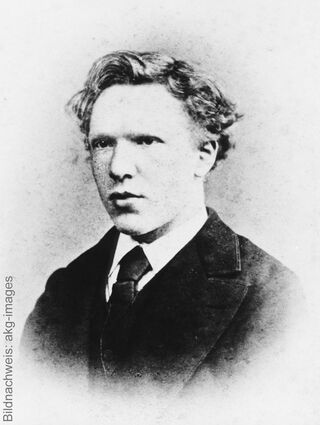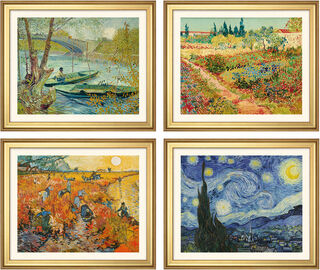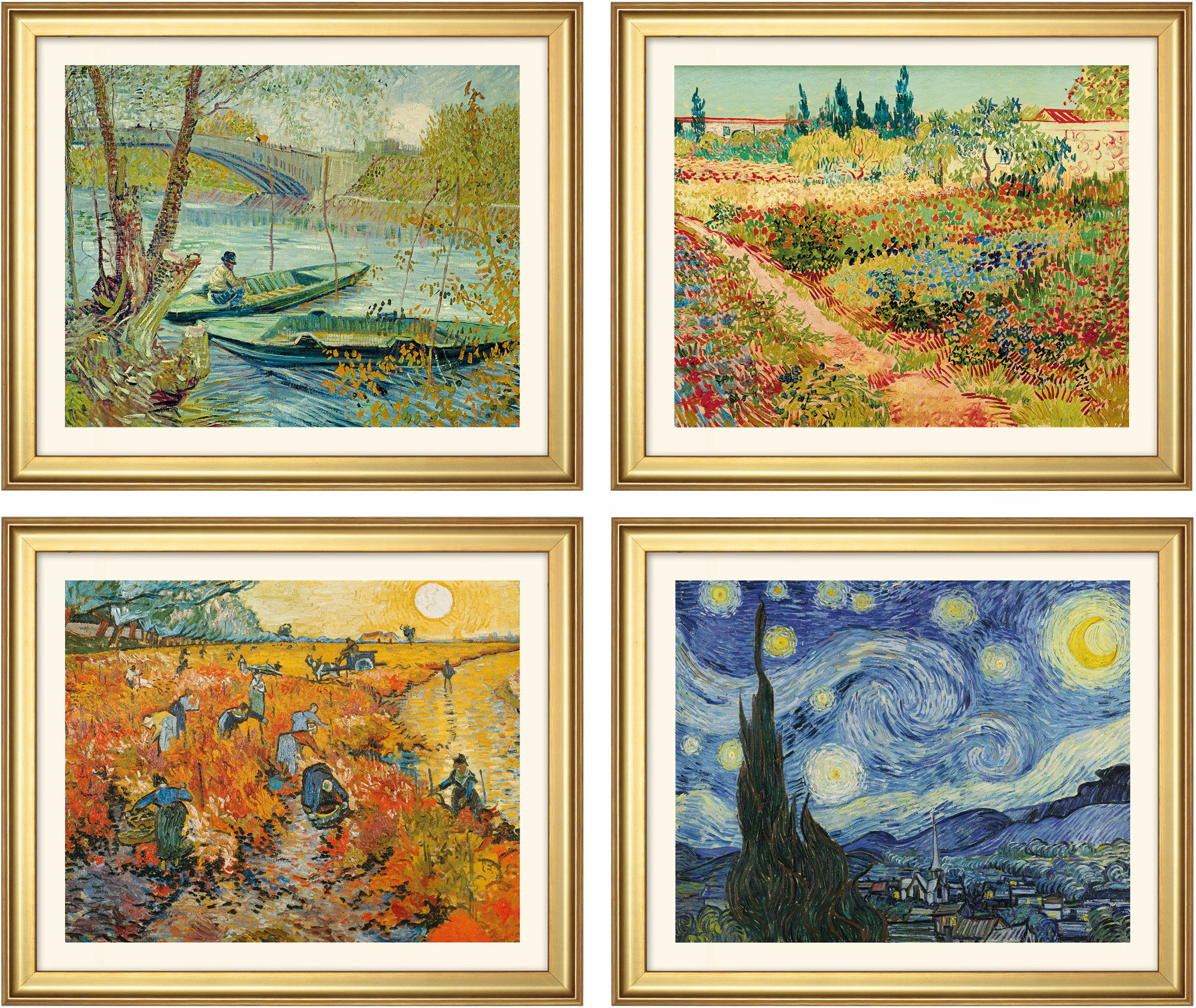4 landscapes in a set, framed


4 landscapes in a set, framed
Quick info
ars mundi Exclusive Edition | Reproductions on paper | framed | glazed | Format each 37 x 44 cm (h/w)
Detailed description
4 landscapes in a set, framed
The last years of Vincent van Gogh's life were of enormous productivity. He produced hundreds of paintings, sketches and preliminary studies. It was not least this "creative explosion" of his late work that made van Gogh one of the most important artists of his time, even though this was only recognized after his death.
Van Gogh never painted a cycle of the seasons - a theme that has always been common in art history - as a coherent subject. However, it can easily be convincingly assembled from the large number of landscape paintings of the last years of his life, since at this time van Gogh travelled practically uninterruptedly with sketchbook, canvas and palette through the landscapes of southern France and was fascinated by the changeability of nature in the course of the cycle of the seasons.
Editions on handmade paper-like, heavy 250g Gmund Tactile. Framed In gold-colored solid wood frame, glazed. Format each 37 x 44 cm (h/w). ars mundi Exclusive Edition.
"Fishing in Spring" (1887): Original: Oil on canvas, 49 x 58 cm, Art Institute Chicago.
"Blooming Garden with Path" (1888): Original: Oil on canvas, 72 x 92 cm, Gemeentemuseum, Den Haag.
"The red vineyard in Arles" (1888): Original: Oil on canvas, 75 x 93 cm, Pushkin Museum, Moscow.
"Starry Night" (1889): Original: Oil on canvas, 73,7 x 92,1 cm, Museum of Modern Art, New York.
All 4 paintings in a set.
This set contains the following products
Customer reviews

About Vincent van Gogh
1853-1890 - Pioneer of Expressionism
"This man will either go mad or he'll leave all the rest of us far behind," predicted Camille Pissarro about Vincent van Gogh, who was born in 1853 as the son of a priest. And indeed, the Dutchman became a precursor of modernism, ushering in Expressionism with his curved lines and bright colours. While during his lifetime van Gogh could hardly earn enough money from his paintings to buy paint and canvases and had to depend on financial support from his brother Theo, today his works regularly reach multi-million dollar prices at spectacular auctions.
Van Gogh (1853-1890) came from a Protestant pastor's family in Groot-Zundert in Brabant. He first came into contact with art through an uncle who was an art dealer. Initially van Gogh worked in branches of Goupil & Cie Gallery in The Hague, London and Paris, but also as a tutor in England and as a Methodist preacher. He first began to draw as a preacher coal-mining district of Borinage. Afterwards, he attended the Brussels Academy for a few months but mainly continued his education as an autodidact.
His first oil paintings depict poor peasants and workers. These pictures are very dark and painted with simple, broad lines. Via Antwerp, where he stayed for three months and became acquainted with the lightness and elegance of Japanese woodblock prints, he came to Paris. Here he discovered the sun and bright colours. He studied the Impressionists, Pointillists and early Symbolists and painted cityscapes, landscapes and portraits.
Seeking more light and freedom, he went to Arles in the south of France in 1888, where his friend Paul Gauguin followed him. Van Gogh planned to establish an artist commune there and invite all his painter friends to live and work with him, but the plan failed. After a dramatic confrontation with Gauguin, in which van Gogh injured his ear, he had to spend several long periods in hospitals due to mental breakdowns. These crises later intensified and eventually led to his suicide.
Van Gogh's most famous paintings were created during his time in Arles. All the luminosity of the sun can be seen in these paintings; fields, trees and clouds reflect the power of nature in an impressive way. For us viewers today, it is hard to imagine the strength that may have been needed to produce such joyful masterpieces in the midst of personal psychological misery. It remains van Gogh's secret - and it remains the secret of his late work to this day.
Graphic or sculpture edition that was initiated by ars mundi and is available only at ars mundi or at distribution partners licensed by ars mundi.
The style of Impressionism, which emerged in French painting around 1870, owes its name to Claude Monet's landscape 'Impression, Soleil Levant'. After initial rejection, it began a veritable triumphal procession.
Painters such as Claude Monet, Edgar Degas, Edouard Manet, Auguste Renoir and others created motifs from everyday life, urban and landscape scenes in bright, natural light.
Impressionism can be seen as a reaction to academic painting. The emphasis was not on content with its strict rules of painting structure, but on the object as it appears at any given moment, in an often random cut out. The reality was seen in all its variety of colours in natural lighting. The Studio painting was replaced by open-air painting.
Through the brightening of the palette and the dissolution of firm contours, a new approach to colour emerged. In many cases, the colours were no longer mixed on the palette but side by side on the canvas so that the final impression lies in the eye of the viewer with a certain distance. In "Pointillism", (with painters such as Georges Seurat or Paul Signac) this principle was taken to the extreme.
Outside France, Impressionism was taken up by painters such as Max Slevogt, Max Liebermann and Lovis Corinth in Germany, and by James A. M. Whistler in the United States.
However, Impressionism was only expressed to a limited extent in the art of sculpture. In the works of Auguste Rodin, who is considered one of the main representatives, a dissolution of surfaces is evident, in which the play of light and shadow is included in the artistic expression. Degas and Renoir created sculptures as well.






